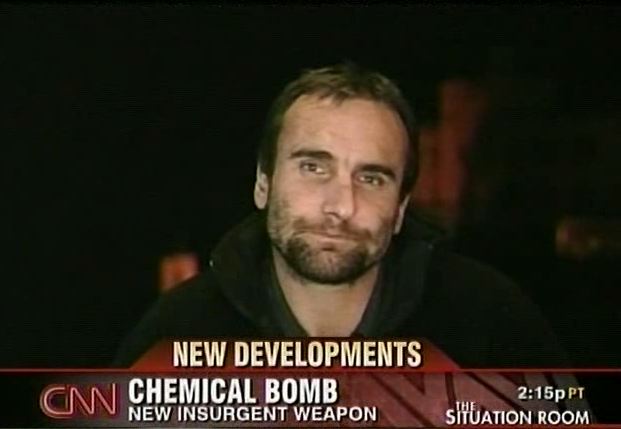TSR: "That’s the real power."

Click photo to play
Length: 4:18
WOLF BLITZER: Let's move on to other news we're following.
Fresh evidence today of a frightening new insurgent weapon, a chlorine bomb. The U.S. military says a raid near Falluja uncovered a car bomb factory complete with deadly chemicals. A car bomb loaded with chlorine canisters blew up in Baghdad yesterday, killing six people and unleashing a poison cloud, which sent dozens of coughing, choking people to the hospital.
Tuesday, a chlorine tanker truck rigged with explosives blew up near Taji, killing at least six people and sickening scores more.
Last month in Ramadi, a suicide bomber blew up a dump truck loaded with a chlorine tank.
The U.S. military says that with these dirty chemical bombs, insurgents are changing their tactics, trying to raise the terror level among the Iraqi people.
So have the insurgents found a new way to strike fear and spread death?
And joining us now in Baghdad, our correspondent, Michael Ware. Michael, what's going on with these chlorine gas bombings, these trucks filled with this poison gas exploding, killing lots of people in the Baghdad area?
Is this a new technique?
MICHAEL WARE, CNN CORRESPONDENT: Well, what we're seeing, Wolf, is two kinds of attack here. Let's get started with that.
One is your ordinary car bomb packed with explosives, but they're putting in some chlorine gas tanks that will go off with the detonation.
The second kind of attack, which is of the kind that we saw a couple of days ago, is actually a chlorine gas cylinder tanker rigged with explosives that was detonated.
These are two of three we've seen in recent weeks. We saw a car bomb version in Ramadi, as well.
Now, in these attacks -- in Ramadi 16 people were killed, in Baghdad, here, there were six killed. and in Taji, I believe it was five; however, it's not known how many people died from the explosions themselves and how many died from the effects of the chlorine.
What we do know, that in these two attacks in Baghdad and Taji, more than 200 people were hospitalized with respiratory illness.
What we need to be aware of is that chlorine is a very difficult thing to use as a weapon. Indeed, if you don't get it just right, a lot of it just burns off harmlessly in the explosion and becomes non-toxic.
You need to concentrate this stuff. But I can tell you this, Wolf, the insurgents have been experimenting with these things since 2003, 2004. I was with them when they were trying to fill mortars with various types of chemicals, mainly blister agents left over from Saddam's regime.
Indeed, an example that was sent to me at one point, I had to have removed from my house by an American military HAZMAT team.
So these guys have been dabbling with these things. There just seems to be a surge in it in the past three or four weeks.
BLITZER: And one of the most dangerous parts of it, the plume, this cloud that develops. You don't know which direction it's going to move and you don't know, if you're in the vicinity of one of these explosions, which way to run.
WARE: Well, from what we've been told by the experts, is that essentially a chlorine gas cloud is invisible. So you can't see it anyway. But you need it in a high concentration, certainly for it to be lethal.
However, it doesn't have to be in that kind of a concentration to cause respiratory problems or other kinds of irritations.
So it may not kill, but as we all well know with weapons of this sort, their true power is the ability to instill terror. And let's have a look at it, Wolf. Let's be frank. You and I are now talking about these three attacks in Iraq. The people of Iraq are now talking about it.
Ignorance -- people unaware of the true impact or limitations of these weapons, are talking about this and the fear spreads. That's the real power, not the damage the bomb itself causes.
BLITZER: A real weapon of terror.
Michael, thanks very much.
